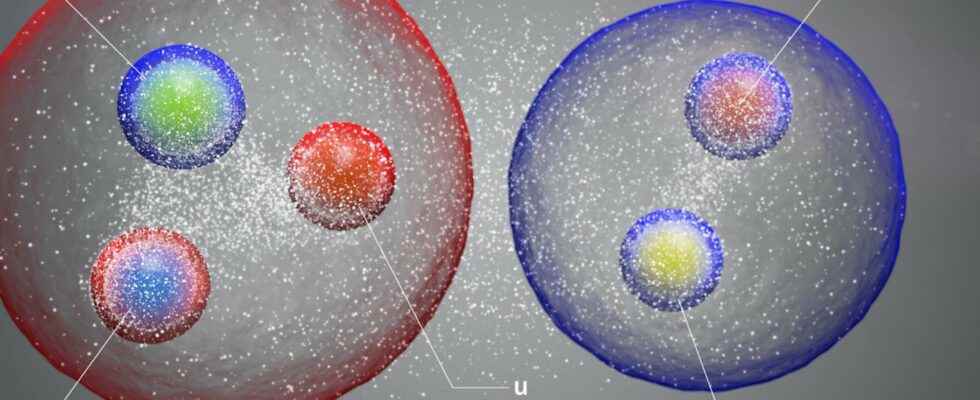Many particles have already been discovered at the Large Hadron Collider (LHC, France-Switzerland). Now physicists say they’ve found evidence of three never-before-seen quark combinations: a pentaquark and a pair of tetraquarks.
You will also be interested
[EN VIDÉO] LHC: how does the largest particle accelerator work? Straddling France and Switzerland, the Large Hadron Collider currently enables proton collisions at an energy of 13 TeV (teraelectronvolts). Discover how this impressive tool works on video thanks to Cern.
The list of particles discovered at Large Hadron Collider (LHC, France-Switzerland) is long. There is the famous Higgs boson, of course. But also some 65 hadrons. And today, there are no less than three new objects exotic which are added to it. A new pentaquark and the very first pair of tetraquarks never detected.
To understand, remember that the elementary particles what are the quarks have a habit of associating in twos or threes. They thus form hadrons, including the proton and the neutron which are quite familiar to us. But sometimes – it is much rarer -, the quarks gather by four or even by five. To form exotic hadrons named respectively tetraquarks and pentaquarks.
A pentaquark and a pair of tetraquarks
The pentaquark discovered this time is unique in that it is the first to incorporate an s quark. Understand, a quark of flavor – this is how physicists qualify the different types of quarks that exist; they know six – ” odd “ or s for “strange”. way more “classic”this pentaquark also contains a c quark – for “charm” – and its antiquark, a quark – for “up” – and one d-quark – for “down”.
The two observed tetraquarks form a pair. It is the first time that physicists detect one. One of the tetraquarks in the pair is electrically doubly charged. The other is neutral. Both correspond to what researchers call a tetraquark at charm apparent. Understand that these tetraquarks consist of a c quark – but also of an s antiquark, an u quark and a d antiquark – without its antiquark.
And for those who are wondering, here is what Chris Parkes, the spokesperson for the LHCb collaboration, answers: “Finding new types of tetraquarks and pentaquarks, and measuring their properties will help theorists to develop a unified model of exotic hadrons – as isolated units of tightly bound quarks or as pairs of weakly bound hadrons, similar to molecules -, but also to better understand classical hadrons. »
Reading ideas for the summer with Futura?
To celebrate the start of the holidays, we offer you the Mag Futura at the preferential price of 15 € instead of 19 €, i.e. a reduction of 20% !
What is Mag Futura?
- Our first paper journal of more than 200 pages to make science accessible to as many people as possible
- 4 major scientific questions for 2022, from the Earth to the Moon
- Home delivery*
*Special offer valid until July 19. Delivery is made in France (excluding metropolitan France), Switzerland, Belgium.
Interested in what you just read?
